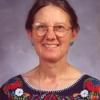Confederation of Latin American Religious (CLAR) is a conference of women and men religious from South America, Central America and the Caribbean.
A list of orders of women religious, including links to each order's website.
The Canadian Religious Conference is a leadership network for Catholic religious communities of women and men in Canada. Its website is available in English and French.
An afternoon spent listening to Sr. Bibiana Anena and other members of the Little Sisters of Mary Immaculate of Gulu is bound to circle around the word “isolated” and the attendant idea of service to others. “In a remote area like this, you can really help the doctors – because there aren’t enough of them to run all the cases,” said Anena, 64, a veteran nurse who lives with her fellow sisters in a residence within an earshot of the Kotido diocese’s office. Kotido is the commercial hub of Kotido district, part of the wider Karamoja region.
I admire my sisters’ tales of trunks. Long before I entered the Franciscan Sisters of Perpetual Adoration – and long before Vatican II for that matter – the common, communal practice was that every sister had to fit all of her personal property into one trunk.
There are no bail bondsmen in St. Joseph County, Indiana; for the past 40 years, Holy Cross Sr. Sue Kintzele has been filling that gap, helping families meet the price of getting someone released from jail until the trial date, so he or she can go to work and take care of children. "A lot of times, I do it for the mothers and grandmothers – they’re the ones stuck taking care of everyone while the person’s in jail.”
The weekend of July 10-13 women gathered as Sisters of Earth to explore “The New Emerging Humanity: Healing the Wholeness” – or the re-invention of wings. Organizers of the weekend invite the questions: What is possible for us as an emergent species in an unfolding universe? What is our growing edge? What is trying to emerge? How can we evolve ourselves by coming together in new ways collectively?
GSR Today - The anguish over the horrific murders of three women religious in Africa this week reached all the way to Rome. But amid the heartbreak are heartwarming stories of sisters doing what they do – saving the world.
" . . . I have asked to be where no storms come, where the green swell is in the havens dumb, and out of the swing of the sea."
In November, Sr. Maureen Fiedler hand-delivered a letter to Pope Francis’ ambassador in Washington, D.C., urging the pontiff to renounce a 15th-century church document that justifies the colonization and oppression of indigenous peoples. She doesn’t know if the letter made it to the Vatican. But she’s hopeful a recent resolution by the Leadership Conference of Women Religious will spur the pope to repudiate the centuries-old concept known as the “Doctrine of Discovery.”





